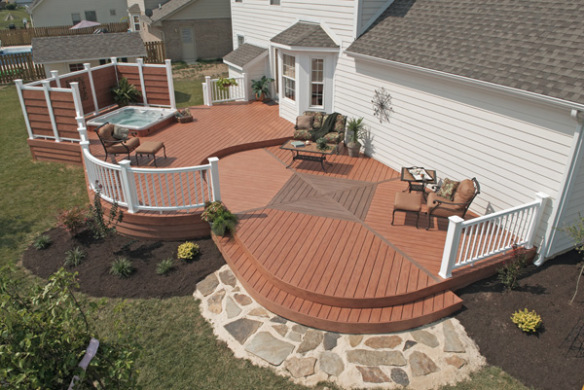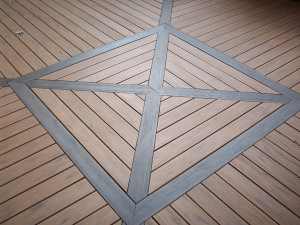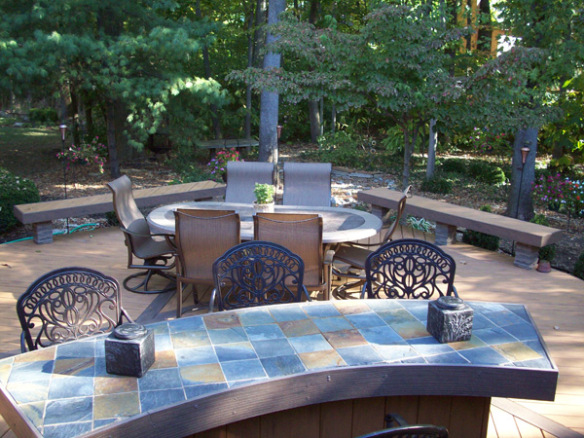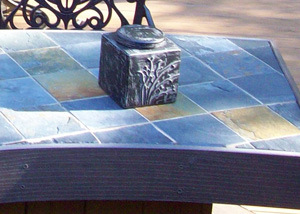Crack open the pages of an upscale architectural magazine, or a hot new catalogue, or an outdoor living design book and you will see rounded edges everywhere. You’ll see landscaping with rounded edges. You’ll see patios with rounded edges and decks with rounded edges. In landscaping and in patios, this is not very difficult to accomplish but in deck building, it’s quite a feat of deft craftsmanship and carpentry.
Tim Stephens of Archadeck of West Central and Southwest Ohio loves to build rounded edges into his decks. I was talking to him about it the other day after seeing some of his work.
On the decks from the images below, I wasn’t sure what I was more impressed with – the inlay or the rounded edges. After our conversation, I was certainly more impressed with the rounded edges and what goes into making that happen.

In order to build a deck with rounded edges, the first critical component from a design perspective is the rounded fascia board. In order to bend a board to the degree it needs to be bent to build a structure with true rounded edges, composites must be used. Tim says that the deck area needs to be larger in order to be able to use rounded edges. His rule of thumb is not to go smaller than 14’ in diameter and a 7’ radius.
The board is bent without using any heating ovens. By working in the hottest days of summer, Tim’s crew of craftsmen are able to bend the fascia boards to the appropriate degree. I wondered if bending the boards would cause them to become more brittle once the weather became cold. He indicated that once the board was successfully bent, it did not crack or strain in the cold or any other times of year.

With the radius edges, there is quite a bit more structure that needs to go beneath. That’s why these decks need to be a little farther off the ground than traditional decks.
“To get roundness (depending on height off ground) we have to use angled beams and put more footers in to support structure” says Stephens.
You can see in the photo above that the deck and fascia boards have a different thickness. The structural support uses a thick hearty board while the fascia is thinner which allows it to bend.
So what can you expect in terms of pricing for rounded edges? As you can imagine, the amount of workmanship, additional materials, and time do add up. Tim says you can expect about a $1,000 – $2,000 upcharge with each curved edge. But what you receive is that much more valuable. That’s why both the decks you see above won design awards in prestigious national publications.

According to Stephens, the deck inlay you see above came about to deliver a creative solution to an age-old problem. Decking boards are only 20 feet long. If your deck is longer than 20 feet long, your boards will need to be joined. Butt joining boards can cause trouble and can look terrible depending on how it’s done. So by creatively inserting the above inlay, it make the joinery area a focal area instead of an eyesore.
The inlay above is TimberTech Earthwood Teak with Walnut inlays.


The deck you see above is located in Centerville Ohio. One of the nice things the owners did is asked for a rounded bar on the deck to further the rounded theme. Their backyard was already meticulously professionally landscaped using all spheres or what landscapers call a curvilinear design.
Tim Stephens’ Archadeck area covers the Dayton and Cincinnati areas of West Central and Southwest Ohio including Blue Ash, Centerville, Cincinnati, Dayton, Germantown, Kettering, Liberty Township, Loveland, Springboro, Sycamore Township, Symmes Township, Washington Township and the surrounding area.